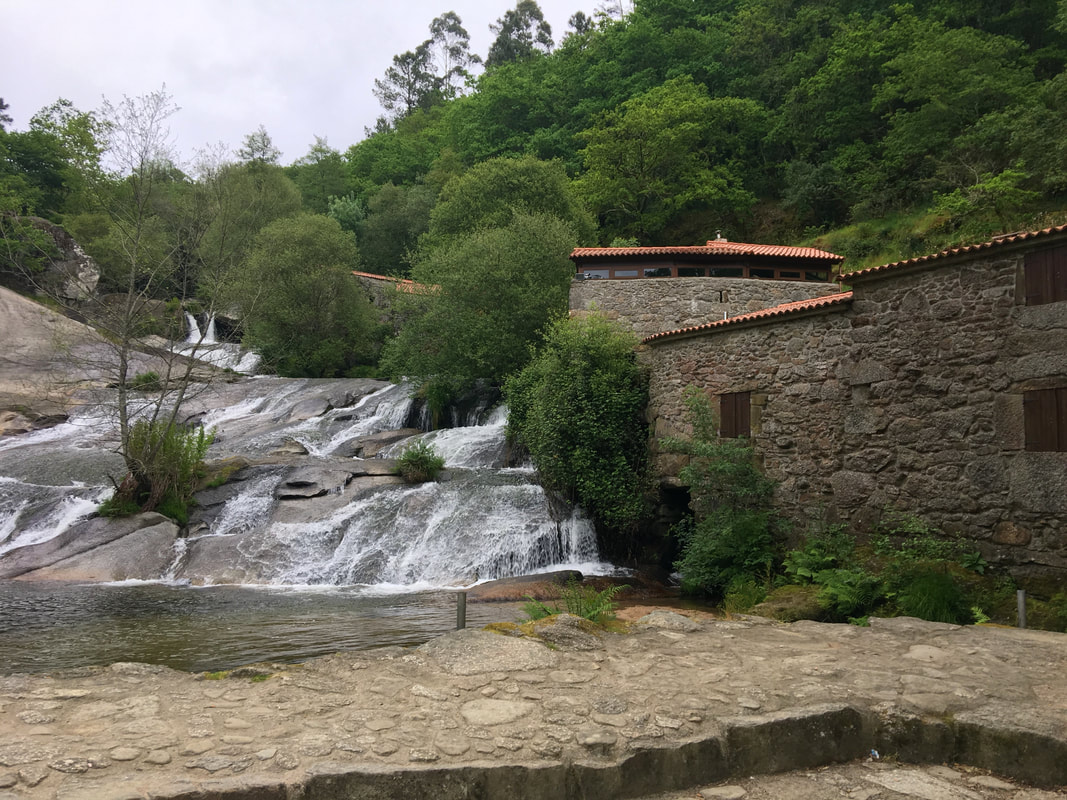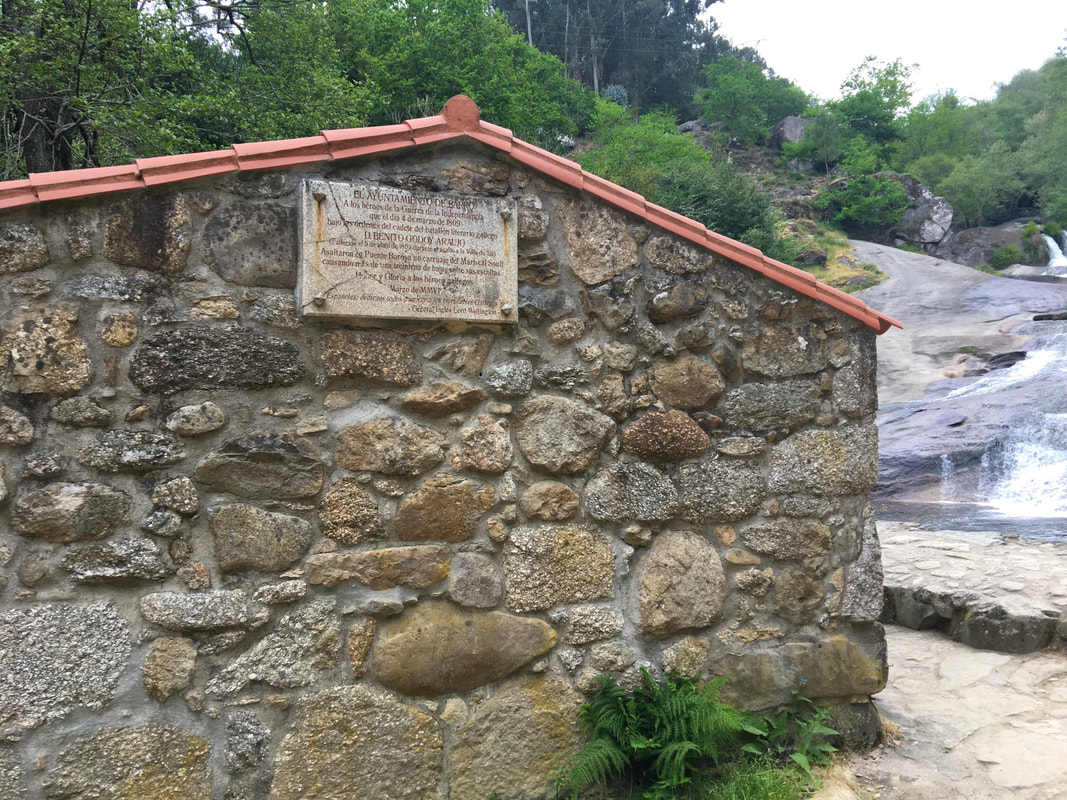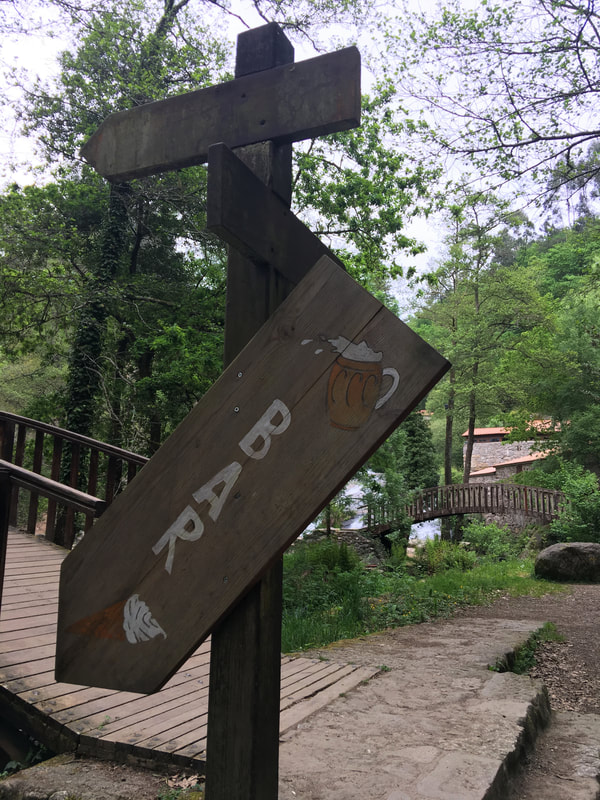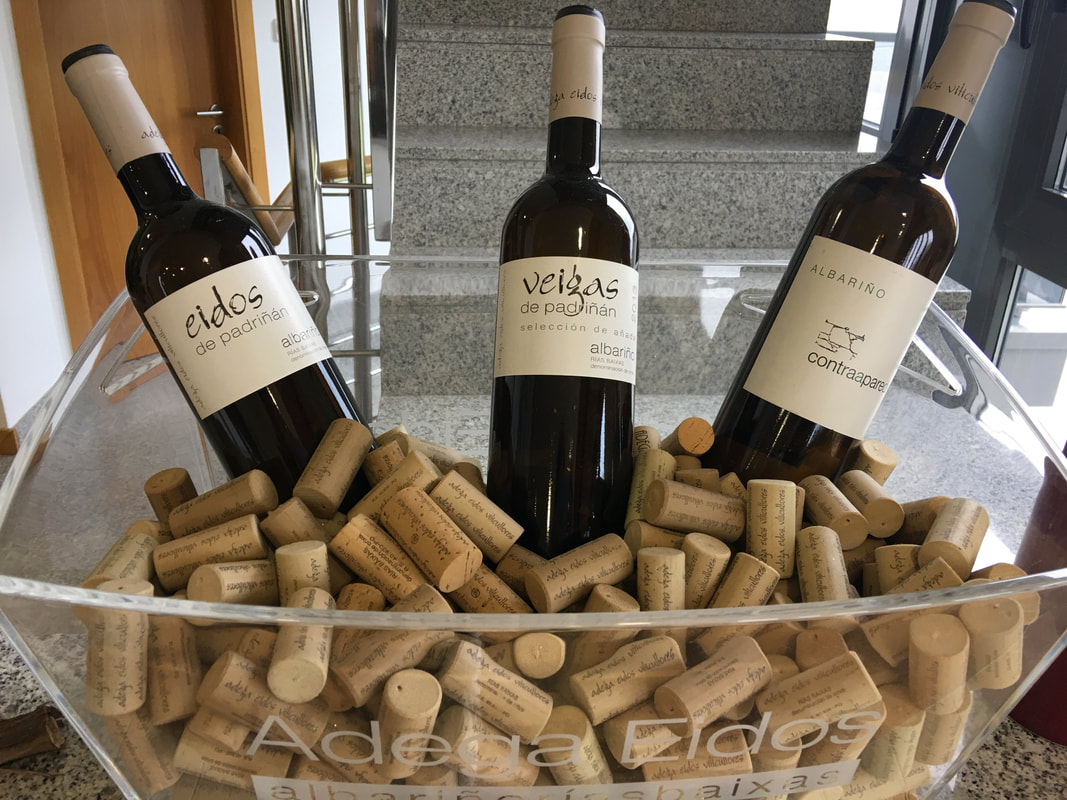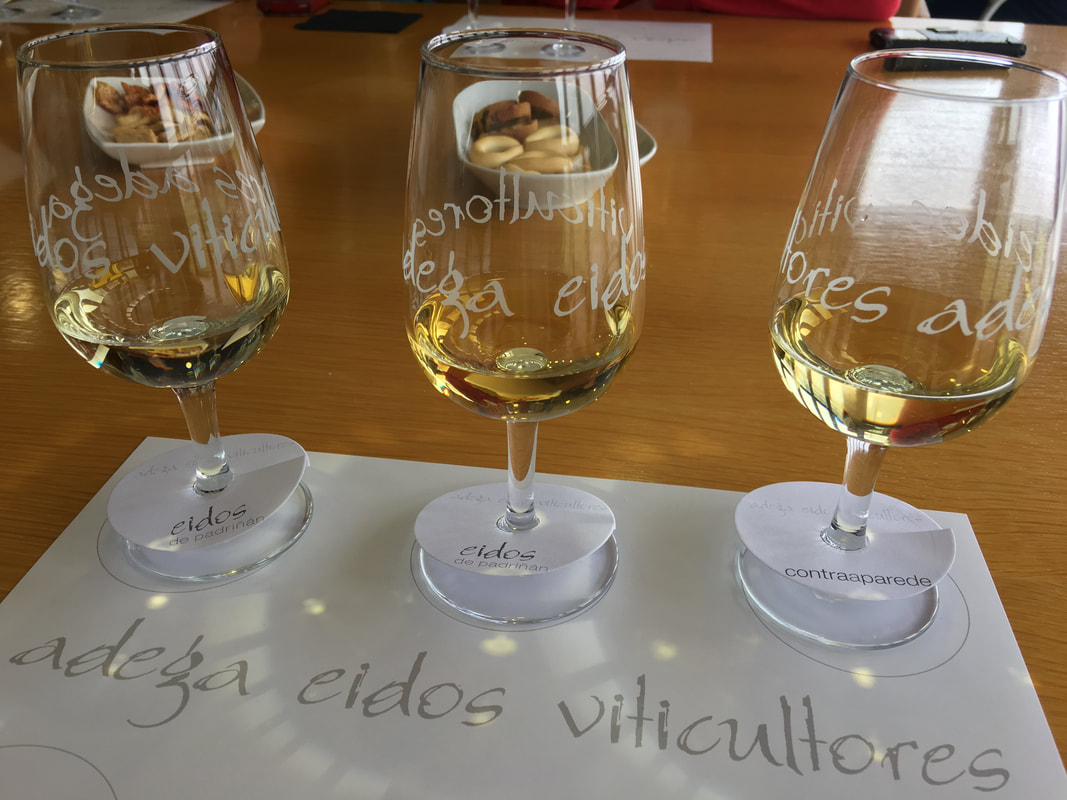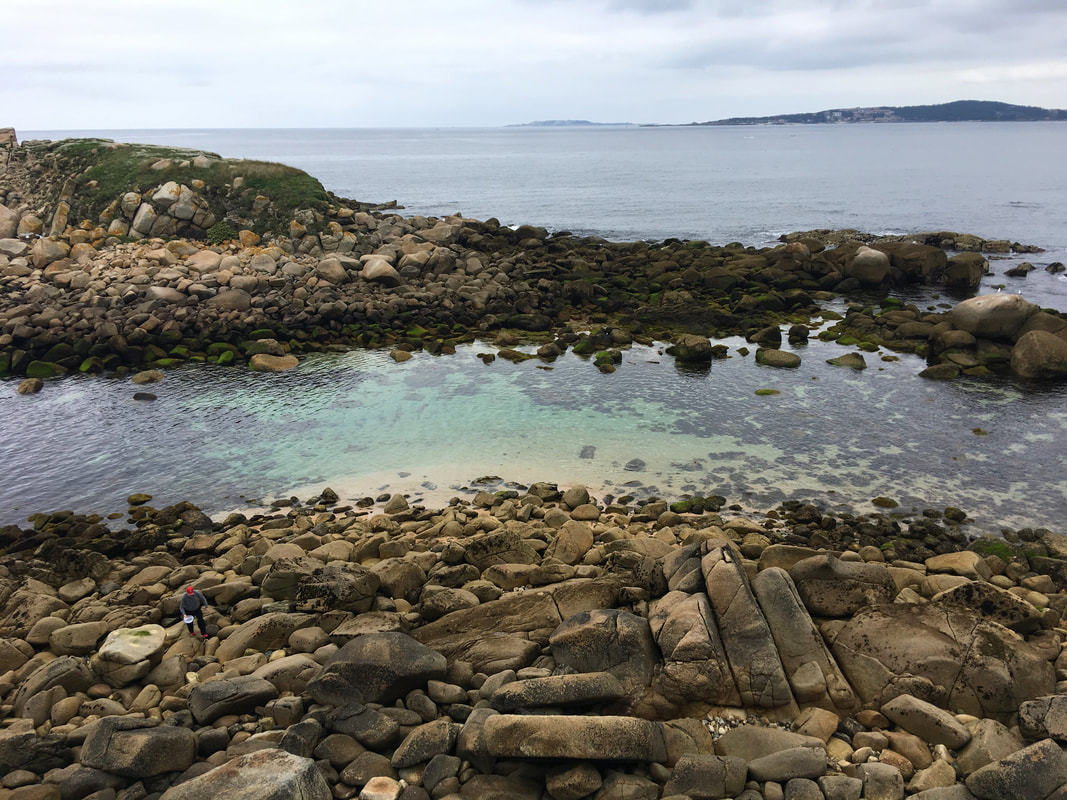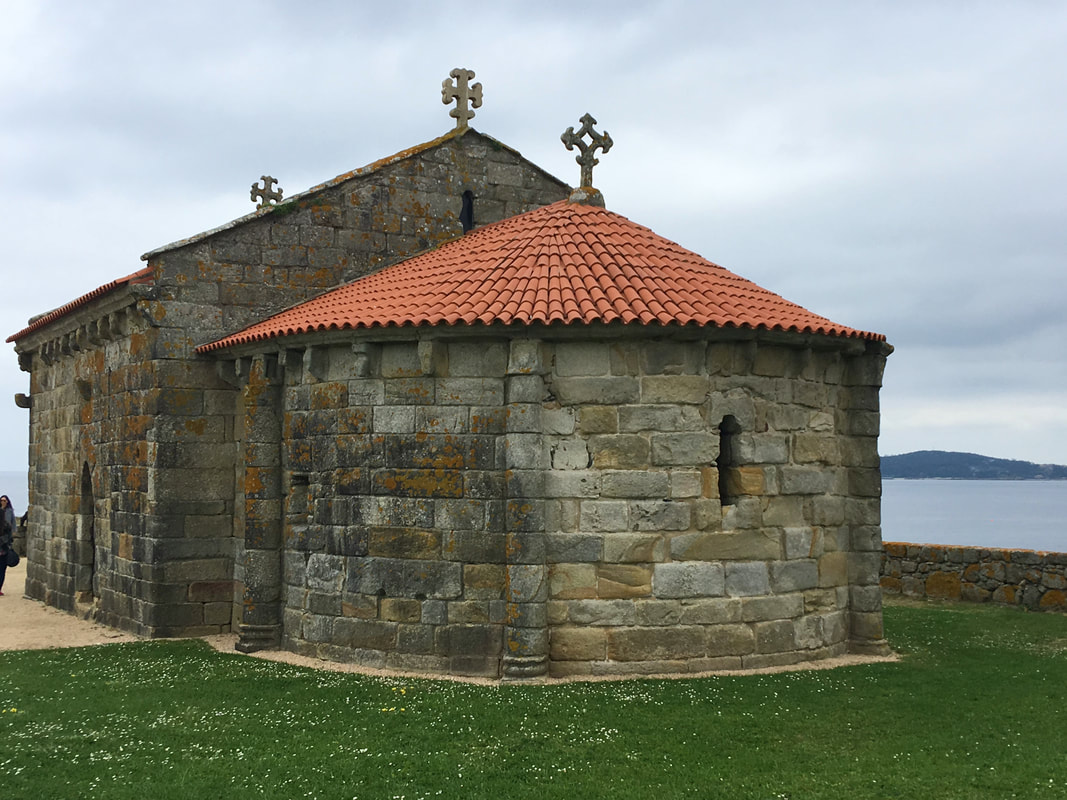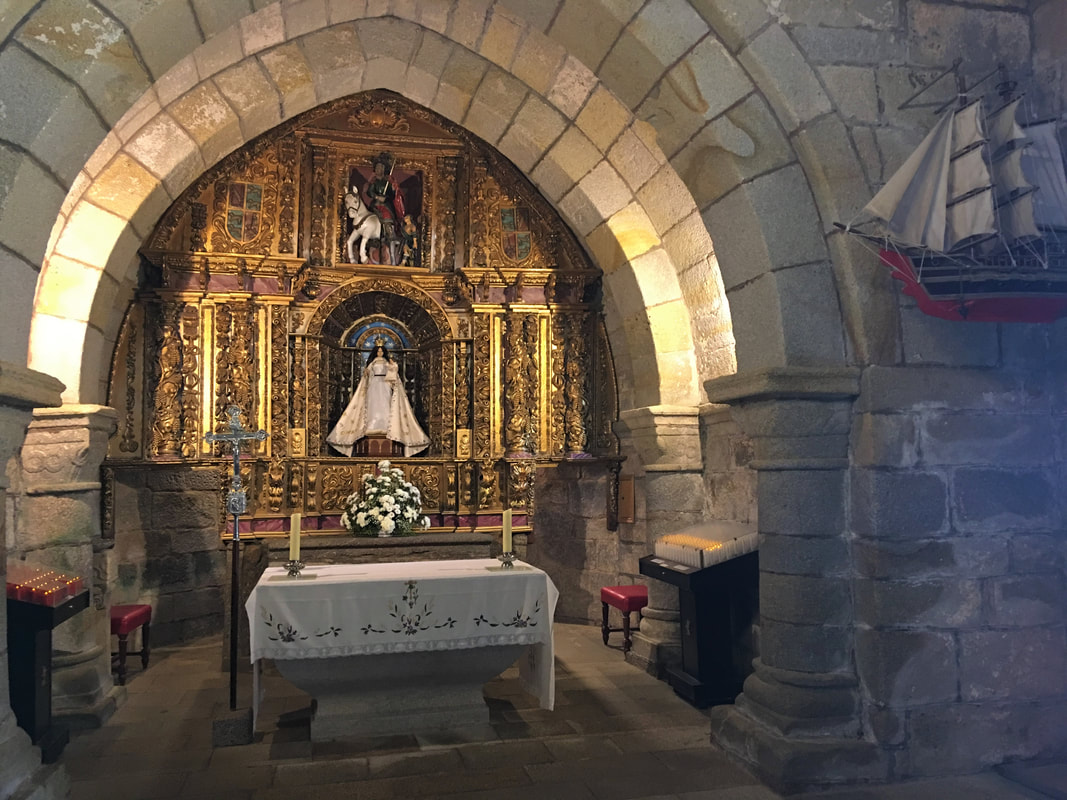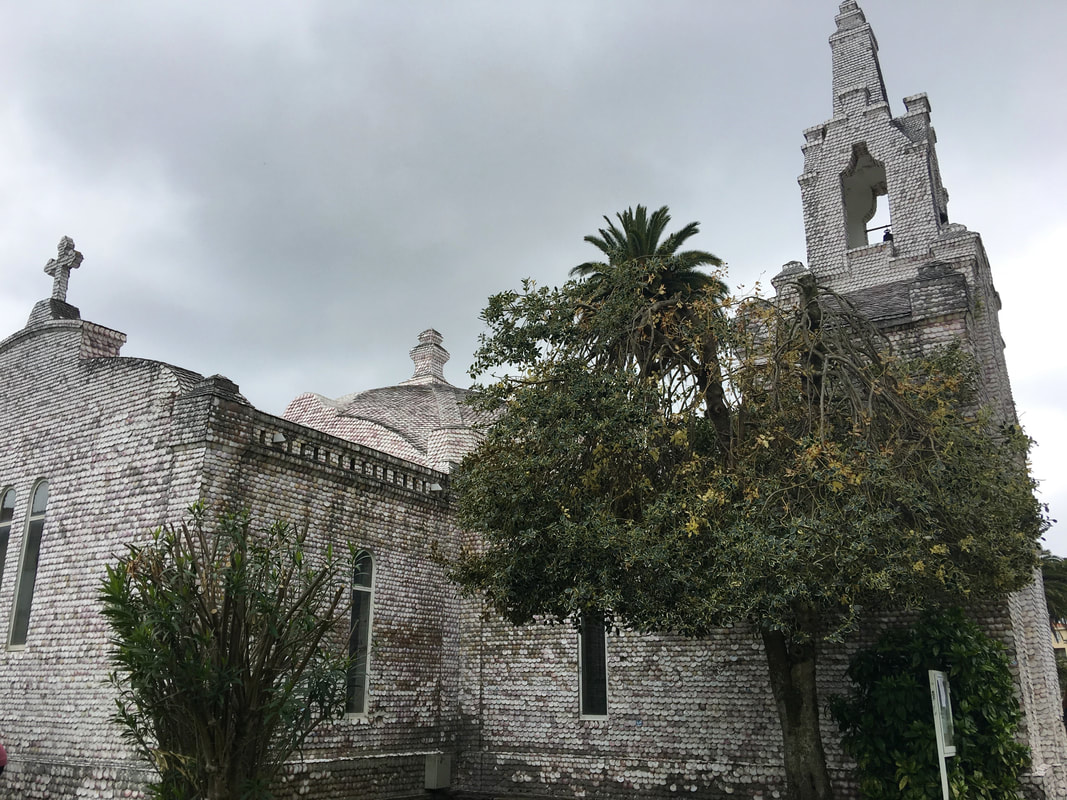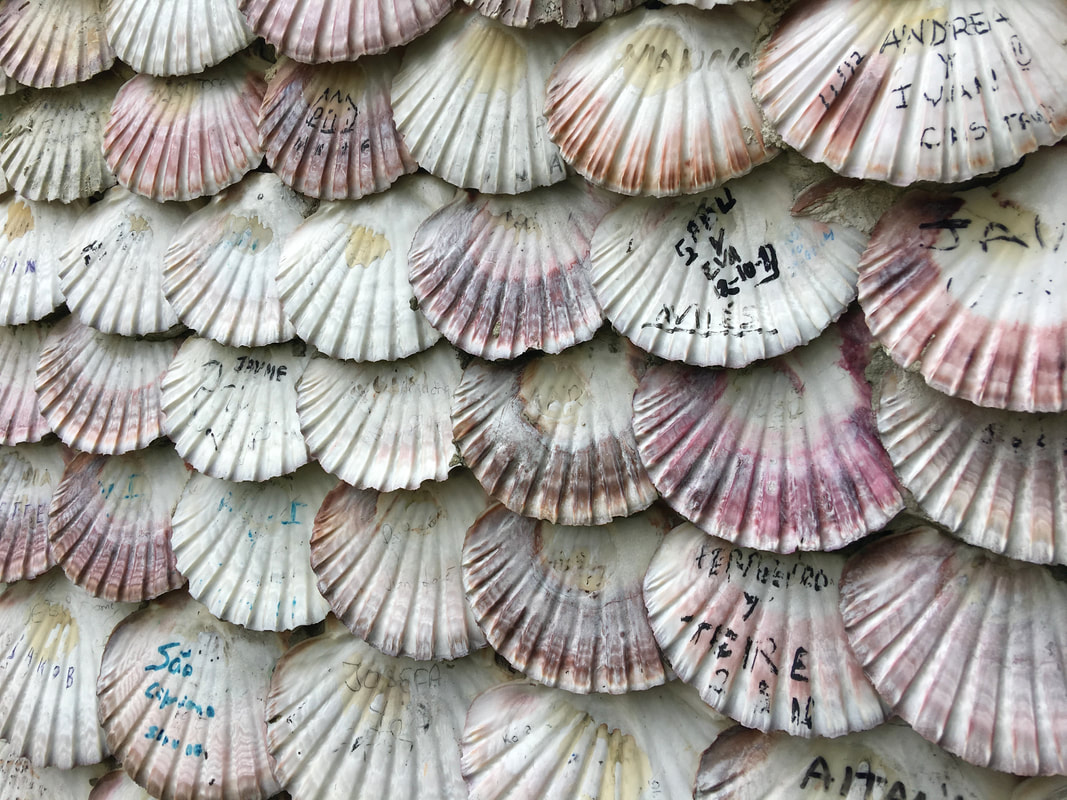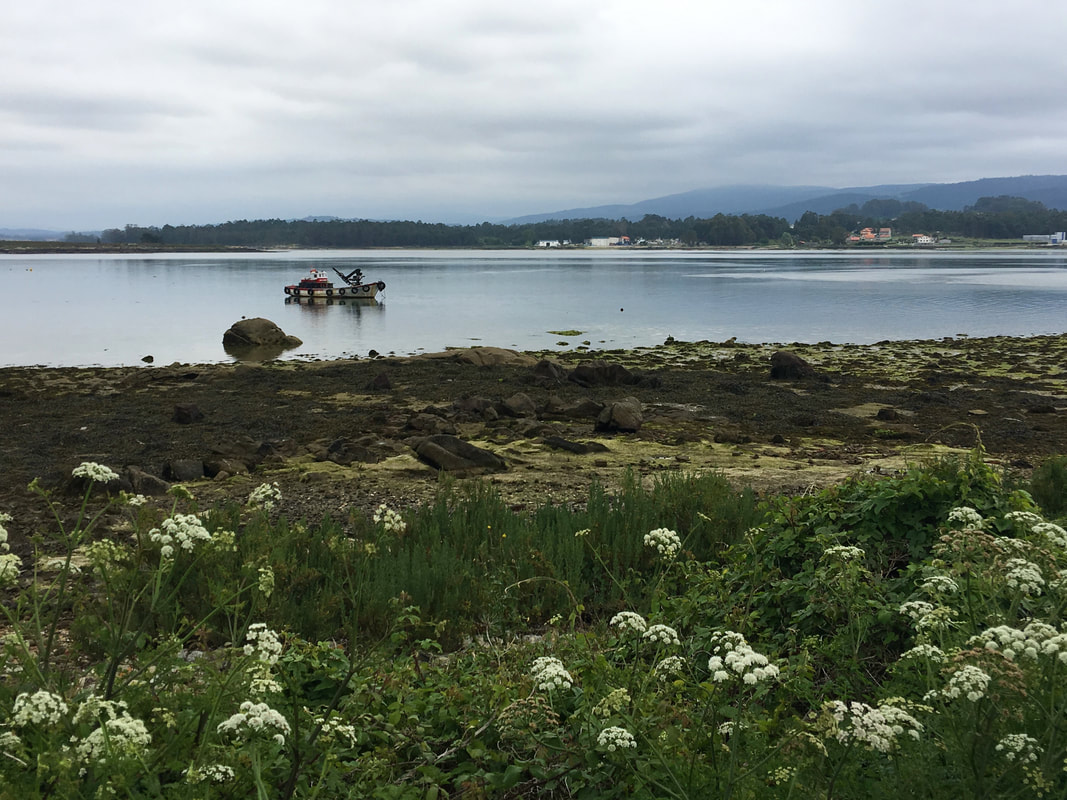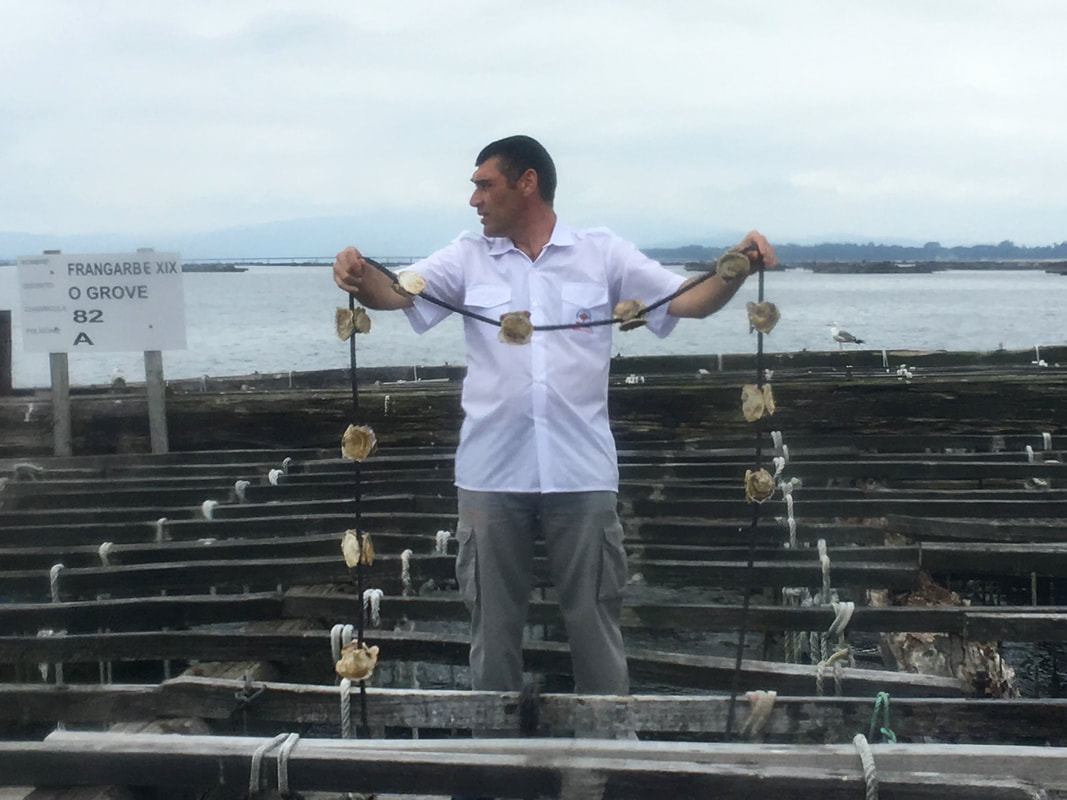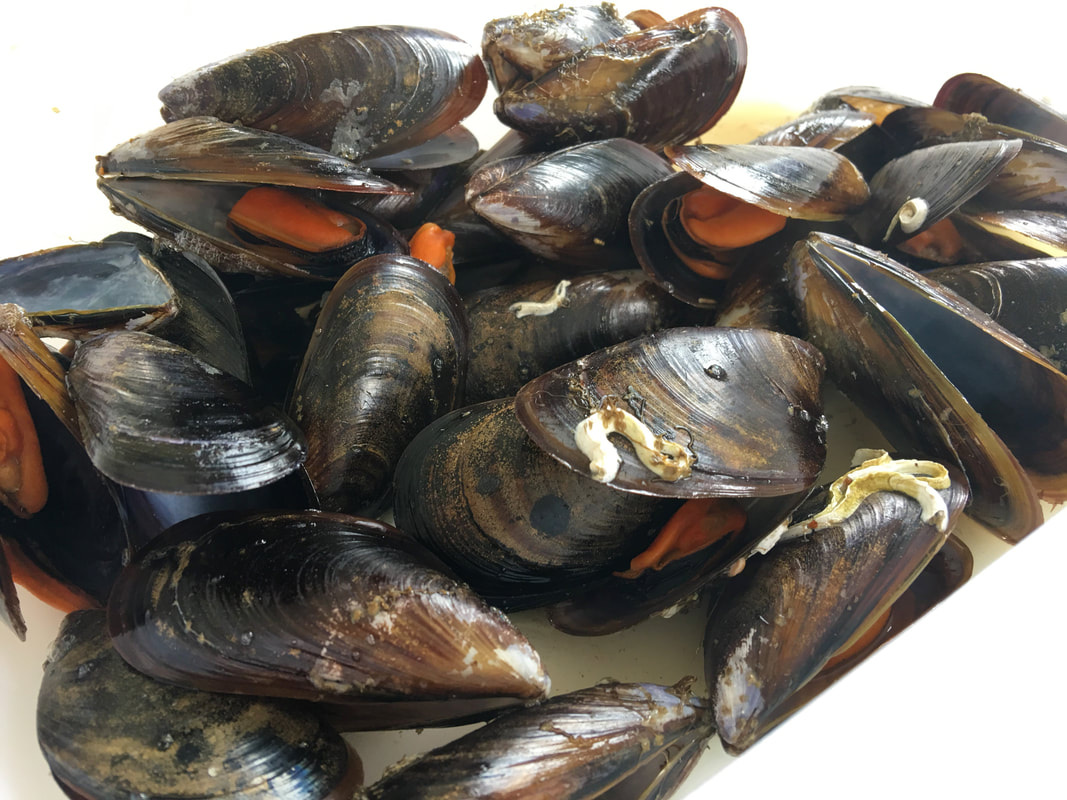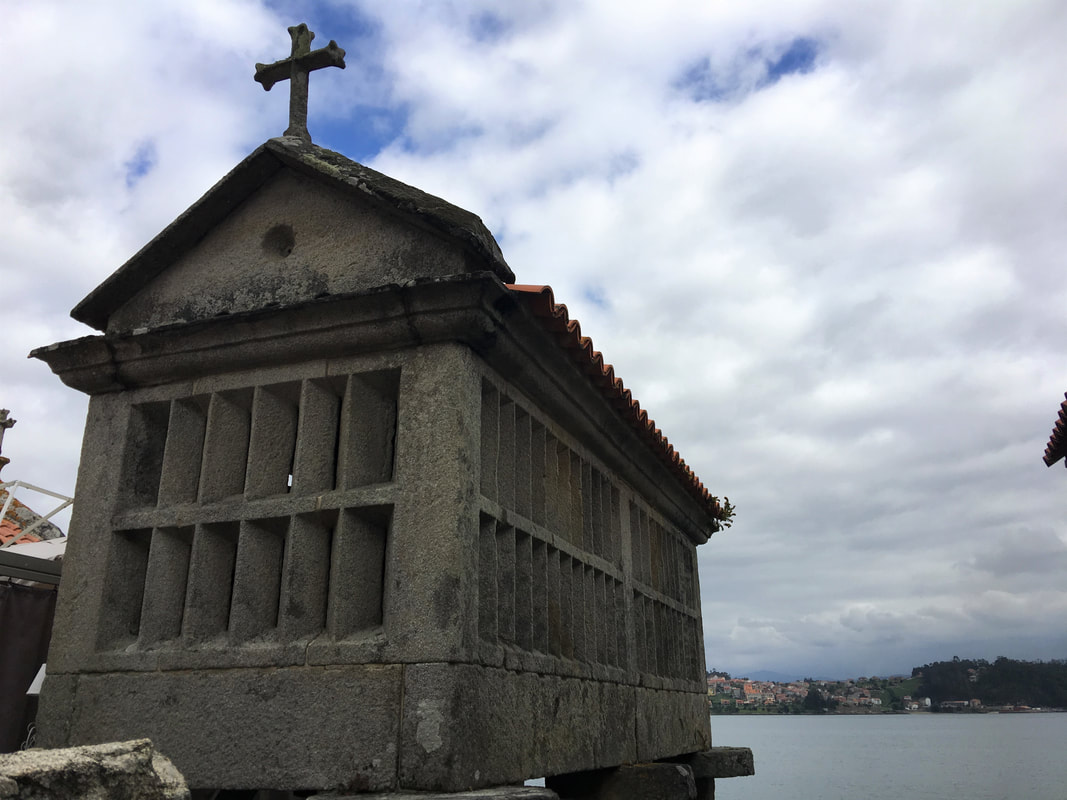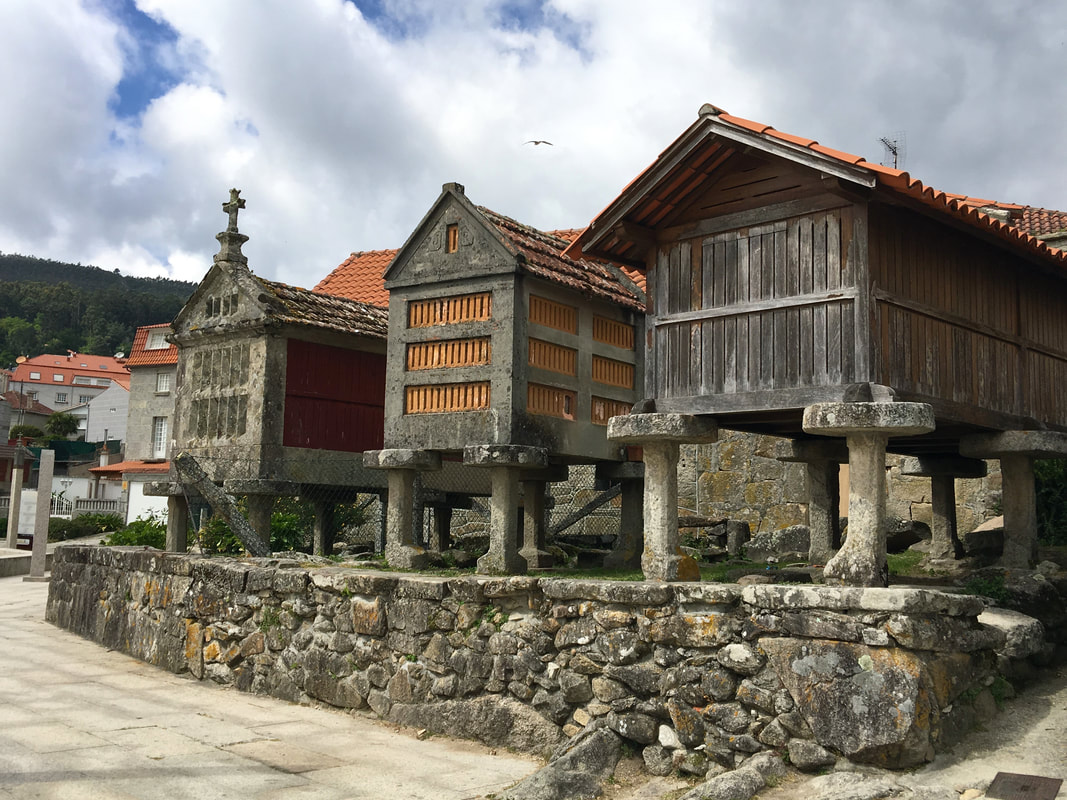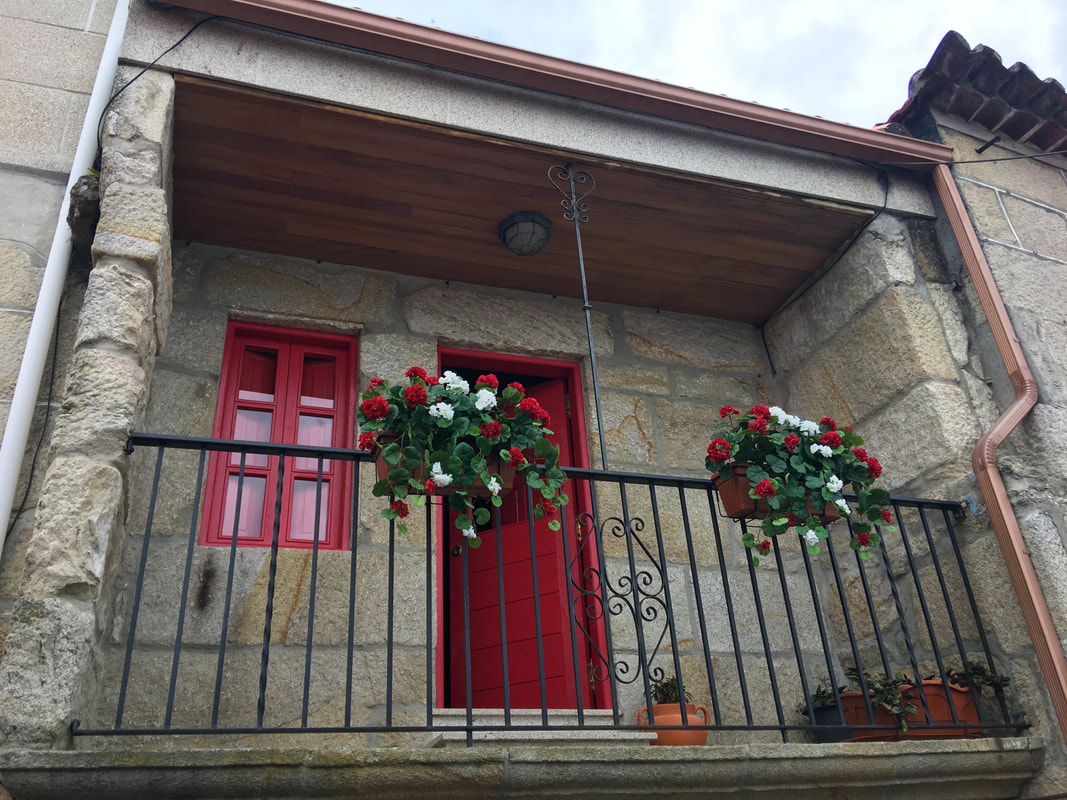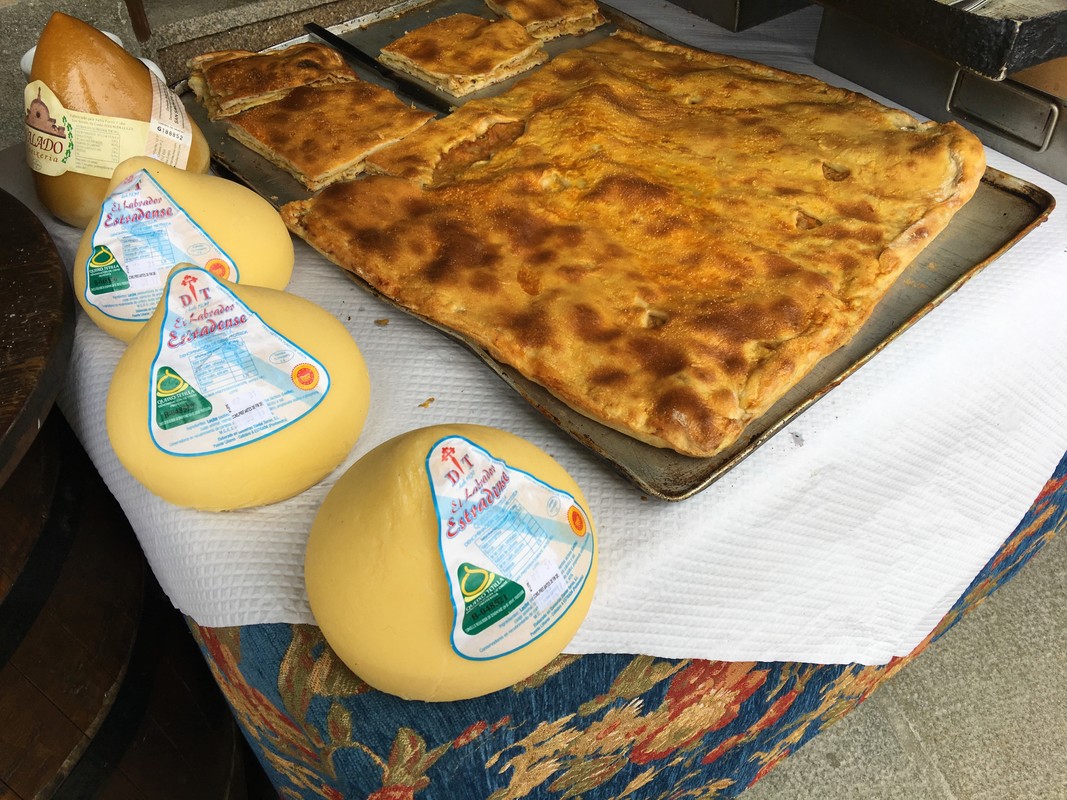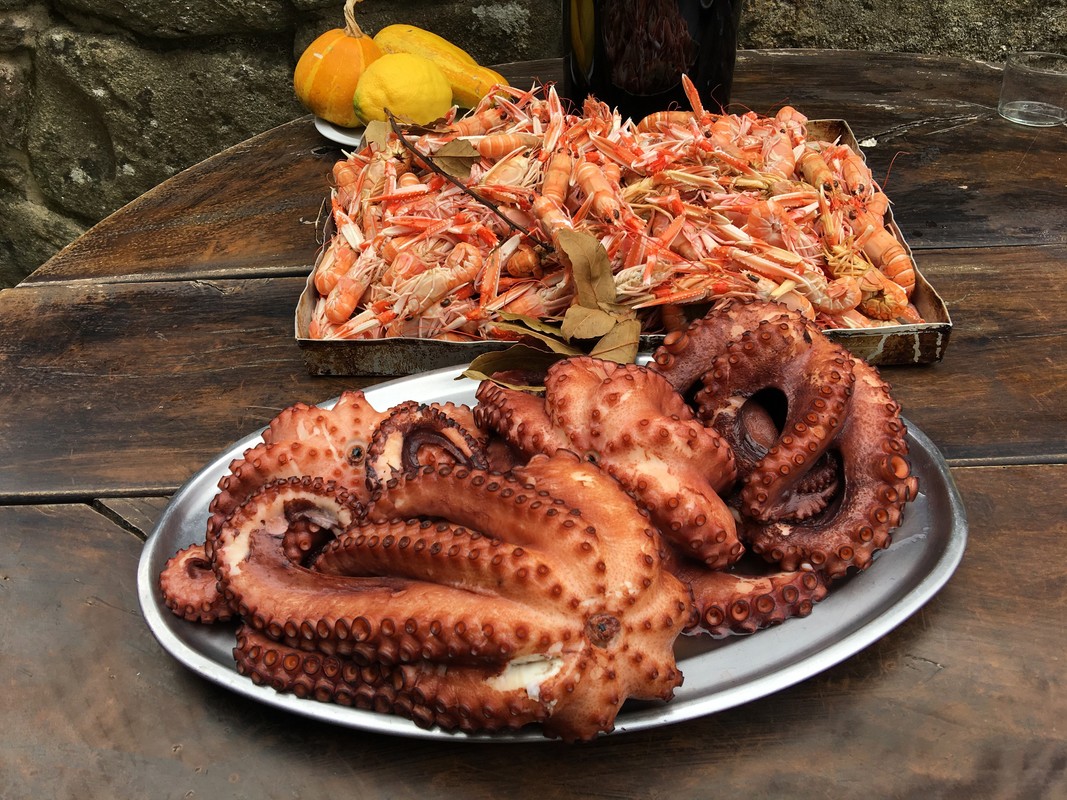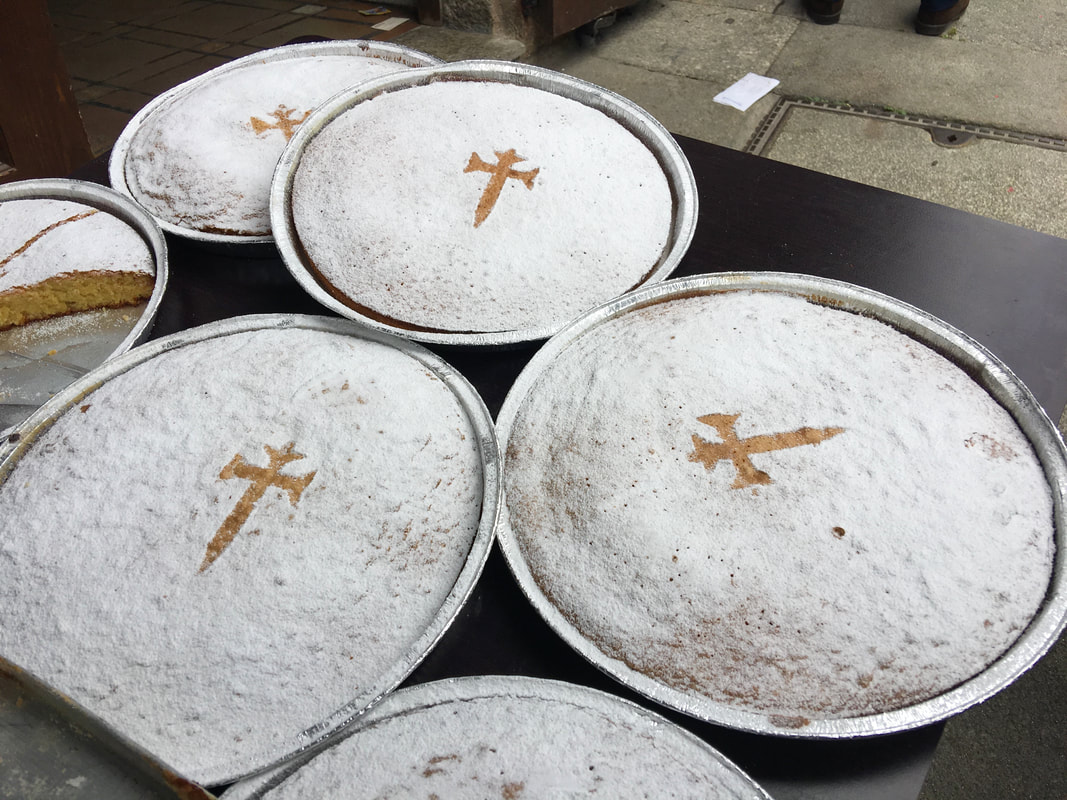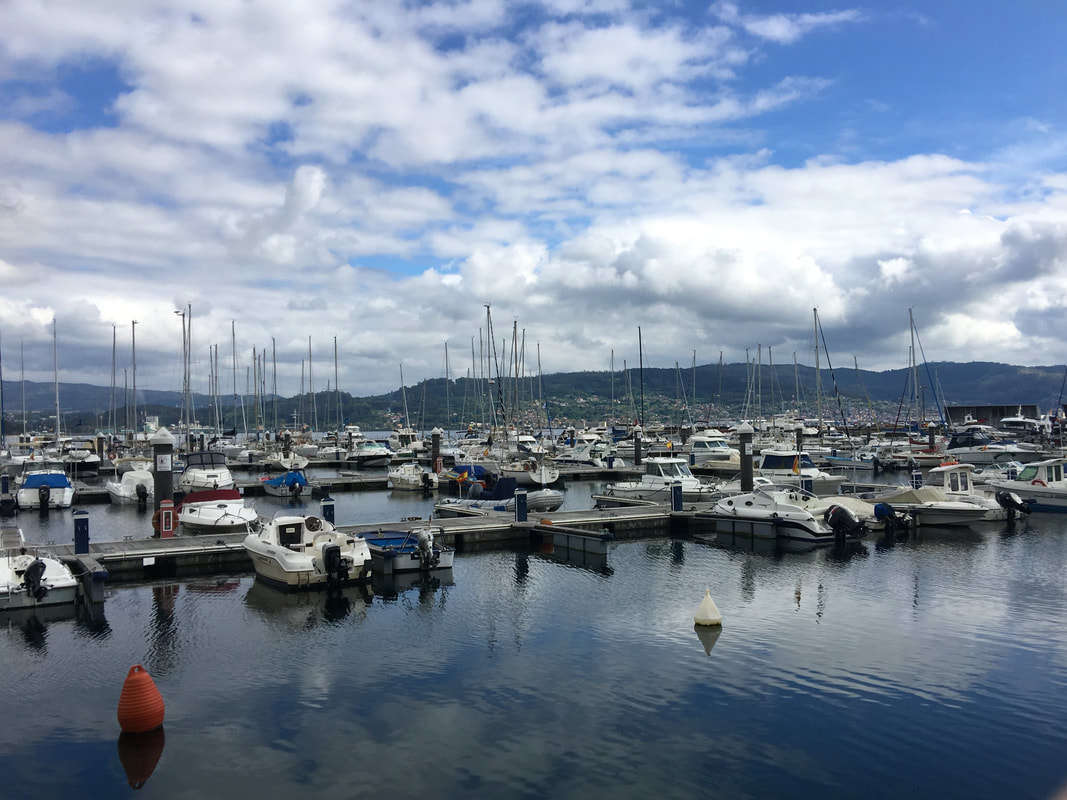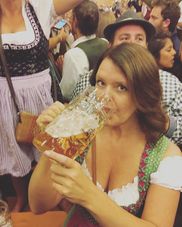|
The day after my food tour in Santiago de Compostela, I was up bright and early for food tour #2. This one would take me outside of Santiago to explore the Rias Baixas area located on the coast of Galicia and renowned for its Albarino wine. The tour would be a bit different than your standard 3-4 hour food tour in that we'd have a full day exploring cute coastal towns, a winery, and, my favorite part, eating mussels and drinking wine while cruising down an estuary. I wasn't actually sure if I'd get to go on this tour at all since there didn't seem to be enough people interested when I initially contacted the tour company. I persistently pestered Martin at Discover Galicia for months leading up to the date to find out if it was a go. I found out a couple of days before that it was and signed up immediately. I was a bit surprised when I met the group that I was the only non-Spanish speaking person on the tour, but decided to seize the chance to spend the next eight hours with native speakers in the hopes I'd learn some more Spanish. It turned out to be a wonderful day interacting with everyone in my broken Spanish (with some translation help from our fantastic guide, Ruben). The weather that day was typical for Galicia...a bit chilly and foggy as we set off for our first stop of the day. On the way, Ruben took us through the history of the region, including the story of the beheading of St. James and how Santiago de Compostela became the capital due to the fact that there was no river access for the vikings and moors to use for an attack. First stop...Rio Barbosa Natural Park My kind of park After communing with nature for a bit, it was time for wine (yay!). The Rias Baixas denominacion de origen region produces wine with 100% Albarino grapes. In 1988, there were 18 vineyards in the area, and today there are 181 with a total of five DO's in Galicia. We stopped at Adega Eidos, a small, family winery that's typical in Galicia. They produce a relatively small number of bottles a year (40,000-50,000) by using a traditional method of harvesting where the sea air-influenced grapes are handpicked in a process that takes three days. We learned that the vines are planted six feet high on pergolas using granite posts in order to regulate the extreme temperatures and humidity common to the area which allows the air to flow through the vines. About 60% of the business at Adega Eidos is exported to the U.S., England and Japan among others. When shipping bottles to the U.S., they have to use different labels with specific language in order to comply with the stricter rules and regulations in the U.S. Three varieties of Albarino, including one that was aged for four years, which is unusual since Albarino tends to be a young wine. Next, we were off to A Lanzada beach, one of the most popular in the area that houses both a chapel built in the 12th century and a pre-Roman cemetery. One of the best things about living in Europe is having the chance to learn about the ancient history of the continent. Before boarding the boat for mussels and wine, we made a quick pit stop at A Toxa island, which is famous for its hot springs. There's also a chapel covered in scallop shells to protect it from the salty wind and humidity, Finally, it was time to board our catamaran for a feast of freshly-steamed mussels and Albarino wine. I boarded the boat last and as a single traveler ended up sitting at one of the last available tables, which happened to be with a lovely couple from the Canary Islands who acted as my translator during the boat ride. We cruised along the estuary stopping at the farms to see how mussels, scallops and oysters are harvested. Together, the three of us drank wine, ate 5 (!) containers of mussels, did shots of a local liquor and ended up joining in on what started with Celtic music and then turned into a dance party. I had no idea freshly-steamed mussels could be so delicious...I couldn't stop eating them Our final stop of the day, and a place on my list to visit, was the fishing village of Combarro. The village consists of numerous horreos, which are elevated off the ground to keep rodents out and used to store crops and grains. We had a bit of time to explore Combarro before meeting back up with the group, so I tagged along with my new friends from the Canary Islands to check out the narrow streets and horreos of the area. Tetilla...or as I like to call it, the boob cheese Tarta de Santiago. Named in honor of St. James and adorned with the silhouette of his sword or cross My tour with Discover Galicia is one of my favorite things I've done since moving to Spain. The Galicia area is stunning and it was a perfect day that I didn't want to end. If you find yourself in Galicia, definitely give Martin a call and sign up for the Rias Baixas tour.
0 Comments
Your comment will be posted after it is approved.
Leave a Reply. |
Hola!I'm Becki...a part-time traveler and recovering expat back in the U.S. after two amazing years spent living in Spain. Archives
July 2018
Categories
All
|
Copyright 2024 - The Cubicle Escape - All Rights Reserved

